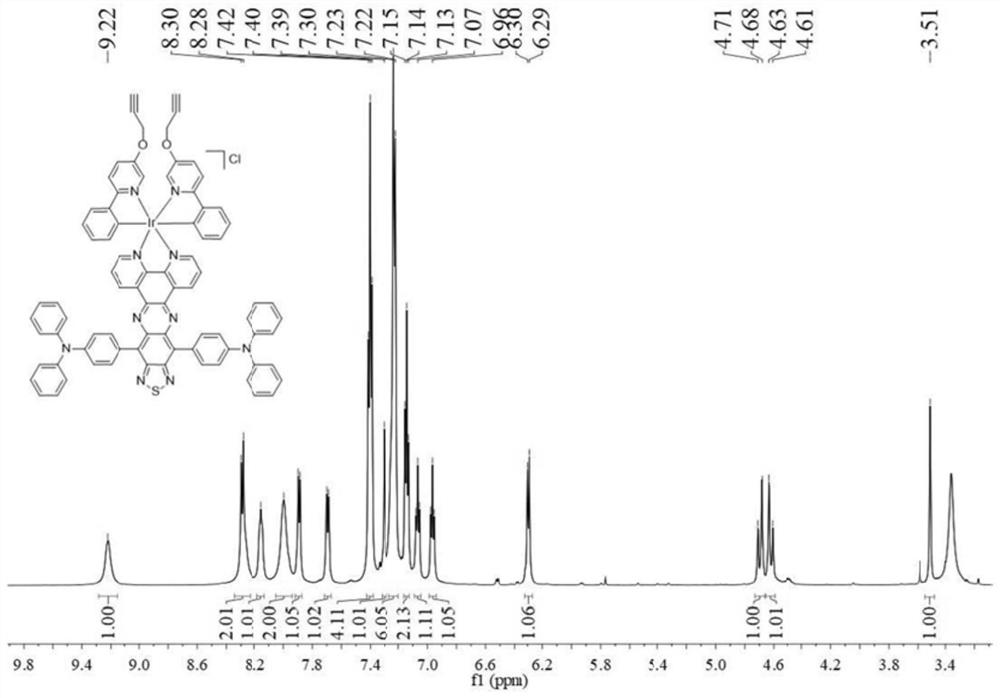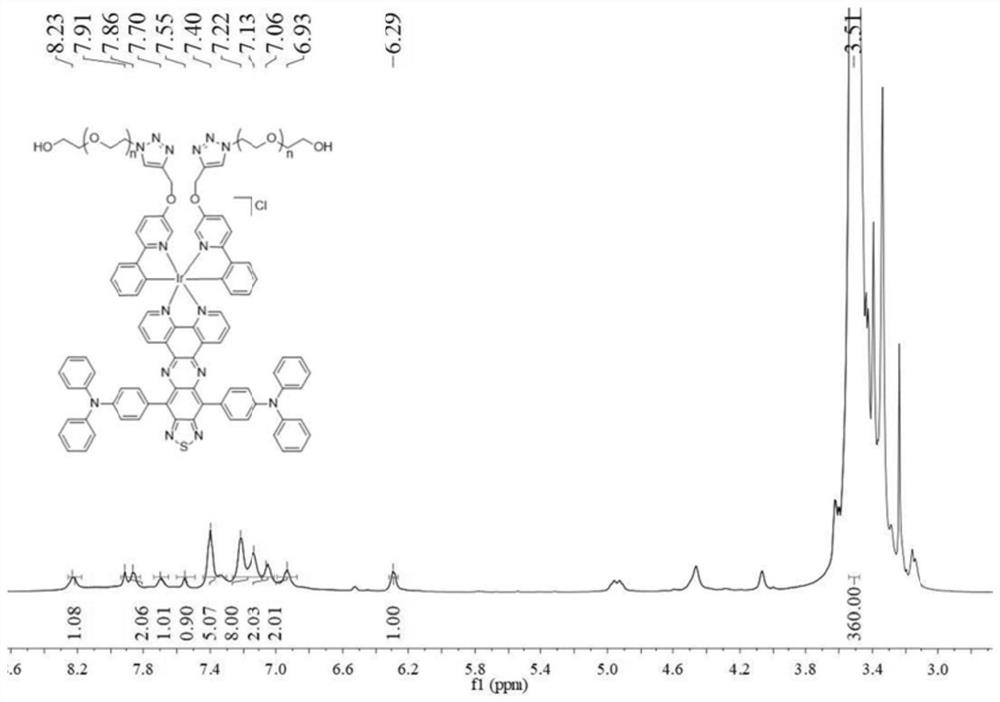A kind of metal polymer, metal polymer nanomicelle and its preparation method and application
A technology of metal polymers and nano micelles, which is applied in the fields of pharmaceutical formulations, drug combinations, photodynamic therapy, etc., can solve the problems of poor biocompatibility, low water solubility, and limited tumor tissue enrichment ability, and achieve convenient preparation, Good reproducibility, simple and convenient preparation method
- Summary
- Abstract
- Description
- Claims
- Application Information
AI Technical Summary
Problems solved by technology
Method used
Image
Examples
Embodiment 1
[0034] Synthesis of Polymer I-1:
[0035] The synthetic route is as follows:
[0036]
[0037] The specific process is:
[0038] (1) Synthesis of Compound 1
[0039] Weigh 2-bromopyridin-5-ol (10.0 g, 57.4 mmol), p-methylbenzenesulfonyl chloride (16.0 g, 86.1 mmol), Et 3 N (8 mL) was dissolved in DCM (200 mL) and stirred at room temperature for 2 h. After the reaction was completed, the solvent was removed and purified by silica gel column chromatography (eluent: dichloromethane / methanol=50 / 1) to obtain a white solid powder (13.0 g, 77.0%), which was compound 1.
[0040] (2) Synthesis of compound 2
[0041] Weigh compound 1 (327.0 mg, 1.0 mmol), phenylboronic acid (183.0 mg, 1.5 mmol), Pd (PPh 3 ) 4 (34.6 mg, 30.0 μmol) in a three-necked vial containing THF (10 mL), N 2 Protection, inject Na with a syringe 2 CO 3 Aqueous solution (2.0M, 1.5mL) was heated to reflux at 66°C for 12h. After the reaction was completed, the solvent was removed, extracted with DCM and wa...
Embodiment 2
[0055] Preparation of polymer I-1 nanomicelles: Weigh 1 mg of polymer I-1, dissolve it with 0.2 mL of DMSO, and then ultrasonicate for 10 min. Take 5 mL of purified water and put it into a 10 mL centrifuge tube. Dissolve the dissolved I-1 The DMSO solution was slowly poured into the water, added to the 5000KDa dialysis bag after continuous ultrasonic for 10min, and dialyzed for 48h, during which the water was changed every 8h. After the dialysis is completed, the liquid remaining in the dialysis bag is taken out and freeze-dried to obtain the target nanomicelle, and the average particle size of the nanomicelle is about 100 nm. Electron microscope image of nanoparticles Figure 4 shown.
Embodiment 3
[0057] ABDA is a common singlet oxygen indicator, which has a characteristic fluorescence emission peak at 427nm under the excitation of 360nm light. When ABDA is oxidized by singlet oxygen, its fluorescence intensity at 427 nm will be weakened, and the decreasing trend of fluorescence intensity has a certain linear relationship with the generation of singlet oxygen. The faster the fluorescence intensity decreases, the more singlet oxygen is generated.
[0058] Weigh the ABDA solid and dissolve it in DMSO to prepare a 10.0 mM ABDA mother solution for later use; prepare a 2.0 mM DMSO solution of nanomicelle I-1, mix it with the ABDA mother solution in equal volume and dilute it with water to prepare a final concentration of 50.0 μM ABDA, 10.0 μM solution of micelle I-1. After mixing the two solutions, place them in a cuvette, and use a laser (808 nm, 0.5 W cm -2 ) irradiation, the irradiation time interval is 30s, and the fluorescence emission spectrum at 375nm-550nm is scanne...
PUM
| Property | Measurement | Unit |
|---|---|---|
| particle size | aaaaa | aaaaa |
| particle size | aaaaa | aaaaa |
Abstract
Description
Claims
Application Information
 Login to View More
Login to View More - R&D Engineer
- R&D Manager
- IP Professional
- Industry Leading Data Capabilities
- Powerful AI technology
- Patent DNA Extraction
Browse by: Latest US Patents, China's latest patents, Technical Efficacy Thesaurus, Application Domain, Technology Topic, Popular Technical Reports.
© 2024 PatSnap. All rights reserved.Legal|Privacy policy|Modern Slavery Act Transparency Statement|Sitemap|About US| Contact US: help@patsnap.com










